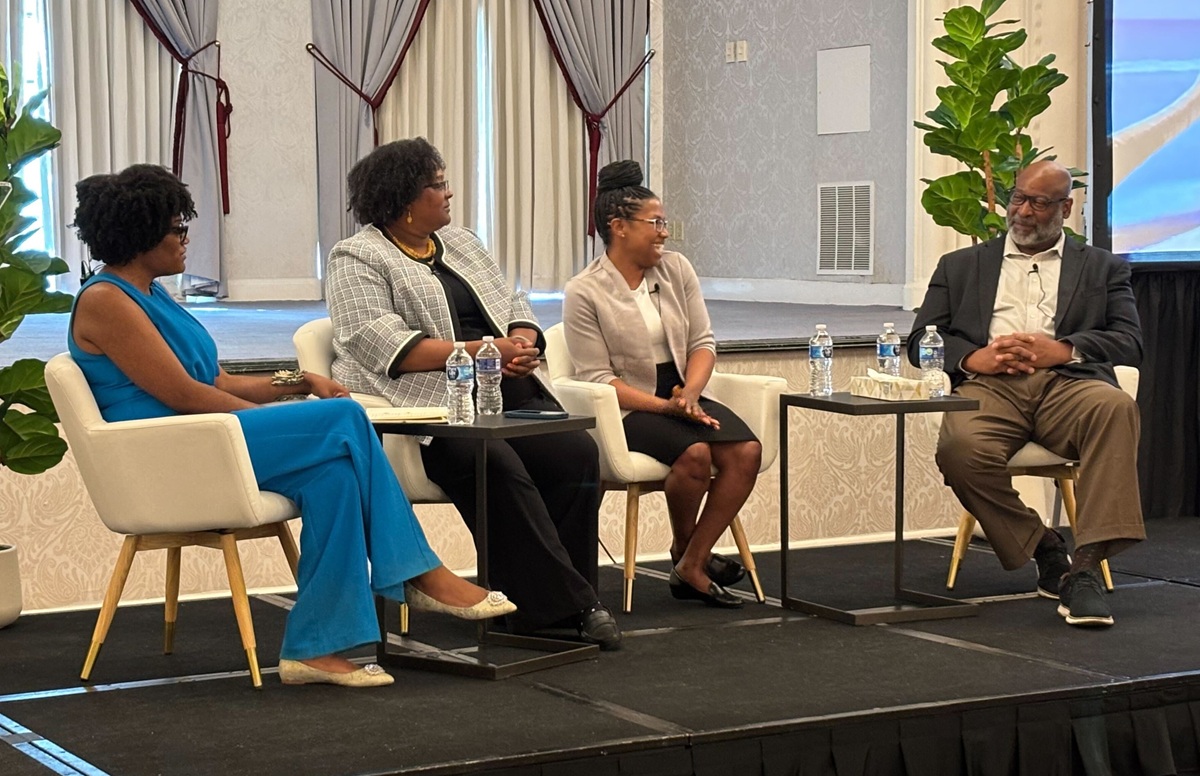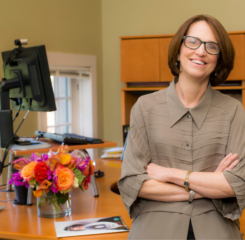Mentoring programs can improve job satisfaction for employees and benefit organizations by lowering turnover and strengthening organizational culture. But for both mentors and mentees alike, some education is generally needed to understand how to benefit from the process and build successful relationships.
That’s the purpose of a current LeadingAge Mentorship Workshop series. Led by Nzinga “Zing” Shaw, a mentorship and cultural competency expert and founder of Attack the Glass, the series’ 37 participants attend virtual group sessions built on “lessons that ensure everyone is working off the same concepts,” said Shaw, in describing the program at an April 8 panel discussion she led at the recent LeadingAge Leadership Summit in Washington, DC. In addition, participants are paired one-on-one (or in some cases, two mentees to one mentor) and tasked with regular meetings and assignments.
The mentorship framework, says Shaw, “intentionally [builds] bridges between seasoned leaders and rising talent in the aging services sector.” The model, she adds, “is designed not just for mentorship, but for lasting leadership impact.” Its goals include:
- Helping participants learn the foundational best practices for relationship building.
- Addressing common barriers and how to overcome them.
- Providing real-world tools for structuring meetings, setting goals, and measuring growth.
- Creating a community of cross-generational, cross-functional leaders who are deeply invested in each other’s success.
Three members of one mentorship group—mentees Kelly Price, member success coordinator for LeadingAge Michigan, and Sonya Portis-Goodman, director of human resources for Georgia-based Isakson Living, along with mentor Jessica Tolsma, certified dietary manager at Skyline, Seattle, WA—recently shared the insights they gained from participating in the workshop series. (Price and Portis-Goodman were also panelists at the April 8 Leadership Summit session.)
All three came to their group with some past experience, formal or informal, as mentors or mentees, and they shared the valuable lessons and growth they’ve experienced as a result of their participation.
Price’s relationship with her mentor, Erica Thrash-Sall, began while both were at McFarlan Village, Flint, MI, managed by Presbyterian Villages of Michigan (PVM). Price, who was assisted living administrator there, says then-executive director Thrash-Sall “began to nurture a mentoring relationship with me and put me in positions—going to board meetings and courses that would allow me to move my career.” The relationship continues, though both have moved on to other organizations.
Price says she joined this year’s mentorship workshops as a mentee because “I felt like I was new to the nonprofit association part of long-term care, and feel like I needed [to be] a little more taken care of.” Noting that she would like to be a mentor in the next cohort of the workshop series, Price has come to see the value of being a mentee well into one’s career: “Some think that once you reach a certain point in your career, you no longer need a mentor,” she says, “but you can always be better, and you can always learn from someone else, even in a different role. One of the things Erica taught me early on in our relationship is that leadership can be very lonely, and having someone [who] has been through the things that you will encounter is necessary.”
Portis-Goodman, as a human resources professional, has experience mentoring her own staff and others. She speaks of the way people seek mentors who they say will “pour into me” their knowledge, experience, and guidance, and explains that she also chose to be a mentee in the workshop series despite her experience. “One of the reasons I became a mentee is because I know, even as leaders, we’ve got to pour into ourselves, or we’ll be depleted,” she says.
Portis-Goodman also believes there is a growing need for people in leadership roles to purposefully seek out people to mentor: “Part of it is because I feel like the art of relationship is getting lost. Yes, you’ve got to have the technical stuff; you need to know the regulations. But if you form a relationship, that’s going to go a whole lot deeper than anything else that you can teach somebody or they can learn in school.”
Tolsma’s mentorship experience has been informal. “I have certainly had great partnerships throughout my career [including her 10 years in the hotel hospitality field] with different leaders who I’ve learned a lot from,” she says, “and one of my passions in my current role is growing folks into different positions, different opportunities.” She learned about the Leaders of Color Network while a Fellow in the LeadingAge Leadership Academy, “and I really fell in love with the values that program entailed. I wanted to learn more through this, … not only how I can elevate myself, but more importantly, the folks around me, and even more importantly, folks of color.”
Portis-Goodman, like Tolsma, is also an alumnus of the LeadingAge Leadership Academy; both credit that experience with increasing their interest in leadership development. Having graduated from the Academy, says Portis-Goodman, “and then bringing it full circle with the mentor and mentee [workshop series] here, I feel like I can handle all of the things that senior living is throwing at us right now, from legislation to changing regulations … to workforce staffing issues, I’m able to flex and bend.”
The three group members meet virtually once per month for about an hour, and Tolsma checks in weekly with Price and Portis-Goodman. Two major assignments have been given: The first was to create road maps of their own career journeys, and then come together to find differences and commonalities between them. “There were a lot of likenesses in our pathways that allowed us to build a better relationship,” Price says. Portis-Goodman describes her own map as “more like a bowl of spaghetti,” reflecting her circuitous career path through the military, a nursing home, and the technology industry before coming to her current position.
The second workshop assignment is to set a goal for their careers, with steps for achieving that goal. “And it’s the responsibility of the mentor and your group mates to make sure you’re reaching those touch points and reach that goal,” says Price.
In the LeadingAge mentorship group, Portis-Goodman says, “we all learn from each other. We’re all in different stages of our careers, and so we’re able to draw from that and get different perspectives, all of them focused on senior living and how to make it better.”
Mentorship Component to Be Included in Leadership Fellowship Pilot
As the new LeadingAge Leadership Fellowship pilot program recruits fellows and host organizations, it will also include a mentorship component led by Shaw. Learn more about the pilot, and how LeadingAge-member provider organizations can participate as hosts, in this article from the LeadingAge LTSS Center @UMass Boston.
Photo: Participants in a panel discussion about the LeadingAge Mentorship Workshop series at the 2025 LeadingAge Leadership Summit, left to right: Program leader Nzinga (Zing) Shaw, president & CEO, Attack the Glass, LLC; Sonya Portis-Goodman, director of human resources, Isakson Living; Kelly Price, member success coordinator, LeadingAge Michigan; and Charles Moore, president & CEO, Armour Oaks Senior Living Community.
Do you have a story of innovation in leadership or workforce development to tell? Use the LeadingAge Story Collector, powered by Greystone, to tell us your best new practices in workforce and other areas including operations, technology, service delivery, partnerships, and more. Try it now.

 Shutdown Week Three: Impact of Ongoing Closure on Affordable Housing
Shutdown Week Three: Impact of Ongoing Closure on Affordable Housing


